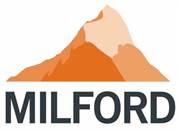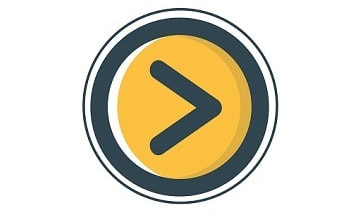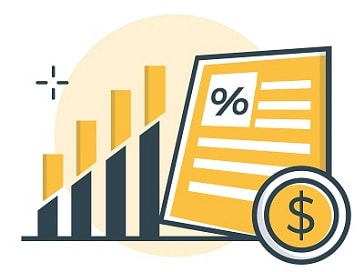Milford KiwiSaver Plan Review
Our guide to Milford KiwiSaver Plan looks at the various fund choices, management fees and pros and cons of this popular KiwiSaver option
Updated 12 October 2021
A Summary of the Milford KiwiSaver Plan
Our Review
In this guide, we outline what the Milford KiwiSaver Plan is, what funds they offer to KiwiSaver members and how they're different to other funds, as well as looking at alternatives and the level of fees involved. This Guide covers:
Please note: MoneyHub is not a Financial Adviser, and this guide has been published to explain the investment fundamentals and outline the pros and cons of Milford as a KiwiSaver investment option.
- Milford offers six KiwiSaver funds, presenting investors with a spectrum of risk, from cash-investing funds to aggressive growth options.
- Milford's Active Growth Fund is one of our favourite KiwiSaver funds, given its long-term performance.
- Management fees are higher than some other, more traditional, KiwiSaver options because Milford has to pay the costs involved with actively managing a fund. These include brokerage when trading shares, the fees of any underlying external fund managers, and the costs of the analysts and fund managers (i.e. overhead) that work for Milford.
- The plan publishes fantastically clear fund updates every three months, all of which show exactly where each fund invests at a granular level (a specific share, external fund managers or cash investment), building confidence with investors. Every Milford KiwiSaver investor also receives a monthly review of commentary and performance data for all six funds.
- There are two types of fees: Management fees (0.20% to 1.15%, depending on the fund) and, for some funds, performance fees if performance targets are met.
- Switching between any Milford KiwiSaver fund is free. There are no joining fees or exit fees if you take your money to another fund.
Our Review
In this guide, we outline what the Milford KiwiSaver Plan is, what funds they offer to KiwiSaver members and how they're different to other funds, as well as looking at alternatives and the level of fees involved. This Guide covers:
- The Specs of MIlford KiwiSaver, Fees and Where Your Money Is Invested
- Milford KiwiSaver in the Media - What You Need To Know
- Who is Milford KiwiSaver Suited to?
- 8 Things To Know About Milford KiwiSaver
- Conclusion
Please note: MoneyHub is not a Financial Adviser, and this guide has been published to explain the investment fundamentals and outline the pros and cons of Milford as a KiwiSaver investment option.
Milford KiwiSaver - Pros & Cons
Pros:
Cons:
- Six clearly-defined funds that offer a sliding scale of risk and return
- Access to in-person and digital financial advice from the Milford KiwiSaver Adviser team
- A trusted KiwiSaver provider which has won multiple awards within the industry
- Funds have a history of top performance - our KiwiSaver returns comparison tool outlines for the most recent three year period.
- Investors get an actively managed fund
Cons:
- Higher-than-standard management fees - this is due to the costs associated with running actively managed funds, specifically the overhead of employing a New Zealand-based fund management team.
- Underlying Managers Performance Fees - the Balanced Fund, Moderate Fund, Active Growth Fund and Aggressive Fund may impose a performance fee, which is explained in detail in the fund's outline below.
Read this First: Fees, Performance and Understanding What's Best For Your Situation
A lot of media attention focuses on KiwiSaver fees, but this is only one thing to consider when picking the most suitable provider and fund for your retirement needs. Milford would likely argue fees should be far less of a consideration and instead point to the past returns (although this is no indication of future performance) and the value for money the fees offer given the services of leading international investment managers.
We believe that being comfortable with what you're investing in is the most important aspect of saving for your retirement, not the fee you'll pay. For example, if you are not willing to risk your money in the sharemarket, it wouldn't be in your interests to invest in a growth fund.
A lot of media attention focuses on KiwiSaver fees, but this is only one thing to consider when picking the most suitable provider and fund for your retirement needs. Milford would likely argue fees should be far less of a consideration and instead point to the past returns (although this is no indication of future performance) and the value for money the fees offer given the services of leading international investment managers.
We believe that being comfortable with what you're investing in is the most important aspect of saving for your retirement, not the fee you'll pay. For example, if you are not willing to risk your money in the sharemarket, it wouldn't be in your interests to invest in a growth fund.
The Specs of Milford KiwiSaver Plan - fees, returns and where your money is invested
- Milford Funds Limited, a fund manager, is the manager of the six Milford KiwiSaver funds.
- Up-to-date fund performance data is available every three months for each fund on the Milford website.
- Milford operates six KiwiSaver funds and invests KiwiSaver money in two asset classes:
- Income assets — refers to lower risk investments such as cash and fixed interest securities
- Growth assets — refers to higher risk investments such as Australasian and International equities (shares) and property.
- Each of the six funds has a unique risk factor (1 = lowest, 7 = highest) and an annual management fee, as well as distinct investment profiles.
Outline of the Six Milford KiwiSaver Funds
1. Milford KiwiSaver Cash Fund
This fund invests 100% of its money in income assets, with a focus on cash, short-dated securities and term deposits.
Investment Composition targets:
Income Assets
We say:
- Base Fund fee: 0.20%
- Risk Factor: 1
- Suggested minimum investment period: This fund does not have a minimum investment time period
Investment Composition targets:
Income Assets
- Cash and Cash equivilants: 20%
- New Zealand Fixed Interest: 80%
We say:
- Milford's cash fund is new and is the smallest by dollar value and the number of investors. If you're specifically looking for a cash fund, Milford's fees are the lowest in the market, which can avoid the recent issue with cash fund returns as outlined in this Stuff.co.nz article.
- You can get an idea of the top ten investment holdings (by value) by reading the latest quarterly fund report (located under 'What does the Fund invest in?').
2. Milford KiwiSaver Conservative Fund
This fund invests 82% of its money into income assets (term deposits and fixed interest), and 18% in growth assets (equities and listed property).
Investment Composition targets
Income Assets
We say:
- Annual management fee: 0.95%
- Risk factor: 2
- Suggested minimum investment period: 3 years
Investment Composition targets
Income Assets
- Cash and Cash Equivalents: 7%
- NZ Fixed Interest: 25%
- International Fixed Interest: 50%
- Australasian Equities: 4%
- International Equities: 9%
- Listed Property: 5%
- Unlisted Property: 0%
- Commodities 0%
- Other 0%
We say:
- Milford's conservative fund sees active investment managers chasing the highest interest rates offered by banks and company bonds while ensuring what they invest in has suitable credit ratings. The conservative fund invests primarily in New Zealand assets (i.e. term deposits with banks).
- The annual management fee of 0.95% is higher than most conservative funds operated by other KiwiSaver option. Nevertheless, Milford's active management structure incurs higher costs which need to be passed on to investors.
- You can get an idea of the top ten investment holdings (by value) by reading the latest quarterly fund report (located under 'What does the Fund invest in?').
3. Milford KiwiSaver Moderate Fund
This fund invests 60% of its money into growth assets (equities and listed property) and 40% in income assets (such as bonds, and fixed-term deposits).
Investment Composition targets:
Income Assets
We say:
- Base Fund Fee: 0.95%
- Performance fee range: The Moderate Fund does not directly charge a performance fee, but it invests in underlying Milford funds that do, such as the Global, Trans-Tasman and Dynamic Funds which are not KiwiSaver funds. Regarding an investment, the historical performance fee calculates to be $1 on a $10,000 investment and only charged when the fund has made an above-market return.
- Risk factor: 4
- Suggested minimum investment period: 5 years
Investment Composition targets:
Income Assets
- Cash and Cash equivilants: 9%
- New Zealand Fixed Interest: 15%
- International Fixed Interest: 36%
- Australasian Equities: 15%
- International Equities: 19%
- Listed Property: 6%
We say:
- While a relatively new fund for Milford, the Moderate Fund was a top-performing fund among Moderate competitors for the three months ended 31 December 2020.
- You can get an idea of the top ten investment holdings (by value) by reading the latest quarterly fund report (located under 'What does the Fund invest in?').
4. Milford KiwiSaver Balanced Fund
This fund invests 61% of its money into growth assets (equities and listed property), keeping 39% in income assets such as fixed-term deposits.
Investment Composition targets
Income Assets
We say:
- Annual management fee: 1.05%
- Performance fee range: The Balanced Fund does not directly charge a performance fee, but it invests in underlying Milford funds that do, such as the Global, Trans-Tasman and Dynamic Funds which are not KiwiSaver funds. Regarding an investment, the historical performance fee calculates to be $23 on a $10,000 investment and only charged when the fund has made an above-market return.
- Risk factor: 4
- Suggested minimum investment period: 5 years
Investment Composition targets
Income Assets
- Cash and Cash Equivalents: 8%
- NZ Fixed Interest: 6%
- International Fixed Interest: 25%
- Australasian Equities: 25%
- International Equities: 29%
- Listed Property: 7%
- Unlisted Property: 0%
- Commodities 0%
- Other 0%
We say:
- The Balanced Fund targets growth more than fixed-income based on its target asset class (61% vs 39%). The Milford Investment managers are tasked with picking shares and other funds they foresee as increasing in value.
- You can get an idea of the top ten investment holdings (by value) by reading the latest quarterly fund report (located under 'What does the Fund invest in?').
5. Milford KiwiSaver Active Growth Fund
This fund invests 78% of its money into growth assets (with a focus on Australasian equities) and 22% in income assets (term deposits and fixed interest).
Investment Composition targets
Income Assets
Performance Fee Explanation: Please see the Balanced Fund section above.
We say:
- Annual management fee: 1.05%
- Performance fee range: 15% of any return above 10% p.a. The historical performance fee of the Active Growth Fund is 0.38% p.a.
- Risk factor: 4
- Expected annual return: 10% over the minimum investment period
- Suggested minimum investment period: 5 years
Investment Composition targets
Income Assets
- Cash and Cash Equivalents: 6%
- NZ Fixed Interest: 2%
- International Fixed Interest: 14%
- Australasian Equities: 68%
- International Equities: 12%
- Listed Property: 0%
Performance Fee Explanation: Please see the Balanced Fund section above.
We say:
- You can get an idea of the top ten investment holdings (by value) by reading the latest quarterly fund report (located under 'What does the Fund invest in?').
- The Active Growth fund's average 5-year 13% p.a. return indicates the competency of Milford's managers in actively buying and selling investments in an effort to outperform global markets.
6. Milford KiwiSaver Aggressive Fund
This fund invests 95% of its money into growth assets (equities) and 5% in income assets (such as cash & cash-equivilants).
Investment Composition targets:
Income Assets
We say:
- Base Fund Fee: 1.15%
- Performance fee range: The Aggressive Fund does not directly charge a performance fee, but it invests in underlying Milford funds that do, such as the Global, Trans-Tasman and Dynamic Funds which are not KiwiSaver funds.
- Risk factor: 5
- Suggested minimum investment period: 15 years
Investment Composition targets:
Income Assets
- Cash and Cash equivilants: 5%
- Australasian Equities: 25%
- International Equities: 70%
We say:
- This fund is Milford's most aggressive KiwiSaver option, with 78% of the fund targeted at growth assets, with 22% allocated to income assets.
- Citing Morningstar data, Milford's Aggressive fund debuted #1 for performance for the year ended 31 December 2020 (among all Aggressive Funds) with a 20% p.a. return. It's early days, but the fund appears to be off to a strong start (relative to other funds in the Aggressive fund sector).
- You can get an idea of the top ten investment holdings (by value) by reading the latest quarterly fund report (located under 'What does the Fund invest in?').
Milford KiwiSaver Plan - What You Need to Know
What Others Are Saying - Milford KiwiSaver in the Media
"It is most appropriate to evaluate performance of a KiwiSaver scheme by studying its long-term returns. Milford Active Growth KiwiSaver tops the performance across all multisector categories over 10 years".
- Morningstar KiwiSaver rankings, June 2018
"The active KiwiSaver schemes like Summer, Milford, Fisher Funds, Booster and Generate charge relatively high fees, and aim to earn them by using fund manager skill to beat the market. Their fund managers research companies, and markets, and try to earn high returns by picking winners, and avoiding losers".
- Rob Stock, Stuff.co.nz, April 2018
"Milford Asset Management's growth KiwiSaver fund topped the growth category delivering $20,395 in net benefits to investors over the past five years" in a 2017 survey by SuperRatings, an Australian research firm.
- KiwiSaver's biggest money earners, Tamsyn Parker, NZ Herald, November 2017
"It is most appropriate to evaluate performance of a KiwiSaver scheme by studying its long-term returns. Milford Active Growth KiwiSaver tops the performance across all multisector categories over 10 years".
- Morningstar KiwiSaver rankings, June 2018
"The active KiwiSaver schemes like Summer, Milford, Fisher Funds, Booster and Generate charge relatively high fees, and aim to earn them by using fund manager skill to beat the market. Their fund managers research companies, and markets, and try to earn high returns by picking winners, and avoiding losers".
- Rob Stock, Stuff.co.nz, April 2018
"Milford Asset Management's growth KiwiSaver fund topped the growth category delivering $20,395 in net benefits to investors over the past five years" in a 2017 survey by SuperRatings, an Australian research firm.
- KiwiSaver's biggest money earners, Tamsyn Parker, NZ Herald, November 2017
Who is Milford KiwiSaver Plan Suited To?
Milford's funds continue to perform solidly year on year, and with a strong media and public relations presence, Milford has positioned itself as a KiwiSaver option for those looking for solid returns. Milford's managers have a track record of delivering results that have previously outperformed markets, ultimately returning significant value to investors.
Standout Features:
Be aware:
Standout Features:
- Six core funds, each clear in their investment strategy.
- Milford has been around well before KiwiSaver launched and has a solid reputation among historical investors, as well as KiwiSaver investors.
- Milford outperforms every other growth fund year on year in the latest Morningstar 10 year returns data - our KiwiSaver returns comparison tool indicates the results in the last three years.
- It's free to change funds; and there are no monthly or annual membership fees.
Be aware:
- The more aggressive funds and are not suitable for short-term investments.
- There is no age-based investment option; members who want to lower their risk as they get older (or their risk profile changes) will have to do this manually.
- Fees are slightly higher than standard bank and index-following KiwiSaver funds - this is due to the costs associated with an actively managed fund, such as the cost of brokerage when an investment manager buys and sells investments.
- As with any investment, markets go up and down. The Dotcom bubble in the early 2000s sank global sharemarkets, as did the 2008 Global Financial Crisis and 2020 COVID-19 crisis.
- While many global sharemarkets are now at record highs, this is no guarantee of future earnings.
The Bottom Line
- Milford is transparent in its investment strategy and has a proven record of outperforming the majority of KiwiSaver growth funds.
- Its investment approach is both responsible and environmentally-leaning, and the investment managers avoid investing in exotic asset classes; your money will not buy shares in anything that creates negative social or environmental effects, or be risky in nature.
- Milford provides an easy-to-use online experience, with a client portal and online app to keep investors up to date at all times.
- The Milford fees are higher than bank-managed KiwiSaver options, and once you are in the growth-orientated funds, you're likely to be in it for the long-term.
- Depending on your KiwiSaver balance, other funds on other platforms can have cheaper management fees, but these are unlikely to be actively managed. We have presented a comparison in the table below. As an illustrative point, we have presented the annual performance of five growth funds below, as well as a table of their annual fees.
- Milford KiwiSaver does not charge any joining fees or exit fees, and you can transfer between funds for free as many times as you want using the member portal or their mobile app.
- Regarding risk, each fund has a risk number (1 = lowest, 7 = highest), and in the case of Milford, the funds have been assessed between 1 to 5.
8 things to know about the Milford KiwiSaver Plan
Milford is NOT a default KiwiSaver providerAs per a discussion with their team, Milford has chosen not to apply to be a default KiwiSaver provider. For this reason, you will only find yourself investing with Milford if you either transferred into one of their funds or picked a Milford fund when joining KiwiSaver.
|
No matter what your employer's default KiwiSaver provider or fund is, you are entitled to select any Milford KiwiSaver fundYour employer is unlikely to offer Milford as a default KiwiSaver provider (although some do), but any KiwiSaver member has the right to pick any one of the 20+ providers and the fund they want. If you feel a Milford KiwiSaver fund is right for you, then you can either join (if you're new to KiwiSaver) or switch your existing fund to Milford.
|
There is no minimum investment, and it's easy to take contribution holidaysAs a Milford KiwiSaver member, there are no membership fee. Milford removed their $1.50/month fee in mid 2021. Also, if you want to contribute to your fund at a level above your fixed salary contribution, you can do this by contacting the client services team.
|
Dividends your fund receives are reinvested, meaning more cash is invested on your behalfAll Milford KiwiSaver funds invest in shares, and many will pay dividends. These cash payments represent the profits from companies returning it to the shareholders, i.e. you. When a company declares a dividend, your fund will receive money, and it is re-invested into more shares, growing the value of your fund. Despite being a cash payment, and as is the case with ALL KiwiSaver funds, there is no option to take this money as cash until you turn 65.
|
Milford practices'responsible investing'Milford has a 'sustainable investing' policy is clear and fully applied to all investments. Its KiwiSaver funds will not directly invest in companies involved in the above link.
In a situation where shares in nuclear weapons, tobacco and coal become popular and increase in price, Milford would not be able to invest in such assets. The purpose of such a policy is to be accountable to investors and make them comfortable with where their money ends up. |
Signing up to Milford KiwiSaver isn't Complicated, but you’ll need to decide what fund to invest in firstSigning up to the Milford KiwiSaver Plan is fast and easy, but before you go ahead, you’ll need to decide your fund first as there is no default fund. Helpfully, the names of their funds - Cash, Conservative, Moderate, Balanced, Active Growth and Aggressive are free of buzzwords or spin.
Generally, if you're looking for a safe investment with the lowest risk of seeing your original investment fall, a conservative fund could be a suitable option. If you're looking for a higher return and are prepared to have your money in higher risk investments which could fall in value, a growth fund operates in this manner. If you're not sure of what to invest in and want to have a range of options to pick from, look at Sorted's FundFinder tool which includes the Milford KiwiSaver funds. |
Milford is a widely popular KiwiSaver option, with a trusted reputationWhile banks dominate 80% of the KiwiSaver market, Milford currently has over $11 billion of funds under management and is one of New Zealand's largest investment managers. Brian Gaynor, Milford's founder and non-executive Director, frequently appears in the media and writes a regular investment column for BusinessDesk.
Since founding the company in 2003, Milford has won multiple awards within the funds management industry, appeared in countless media publications. These include:
Because of the large public profile Milford has created, short-term and long-term investor performance is critical to its ongoing success. |
All of the funds (currently) invest in New Zealand sharesEvery fund (except the cash fund) has a target to invest in 'Australasian equities', and recent fund updates highlight that many of the top ten assets held by the Balanced and Active Growth funds were listed New Zealand companies, including Spark, Contact Energy and Fisher & Paykel Healthcare.
Milford actively manages its investments and does not need to invest according to its targeted portfolio ratios (i.e. cash 10%, Australasian equities 45%, 45% international equities etc) if it sees specific opportunities. For example, if global sharemarkets are dropping significantly, the fund managers can sell equity investments and put the money into cash accounts with a bank, rather than re-invest it in the sharemarket. In essence, the allocation targets are not fixed; if a fund states its Australasian equities allocation target is 40%, it can still invest anywhere from 0% to 100% - the investment manager has ultimate control. |
Our Conclusion
- Milford KiwiSaver offers six distinct funds that give investors exposure to a variety of underlying investments both nationally and internationally.
- Milford offers a solid performance history, with all funds outperforming their peers per our KiwiSaver returns comparison tool (which uses data from Morningstar)
- Operating since 2007, the average Milford KiwiSaver investor balance sat at $65,000 in 2017 (the BNZ, for comparison, was $18,000), which was the highest of any provider. It's our view that unlike other providers, Milford targets higher-earners who make regular large contributions month-on-month.
Do you have experience with the Milford KiwiSaver Plan that you would like to share with our readers? Email our research team who would be delighted to hear from you.
















